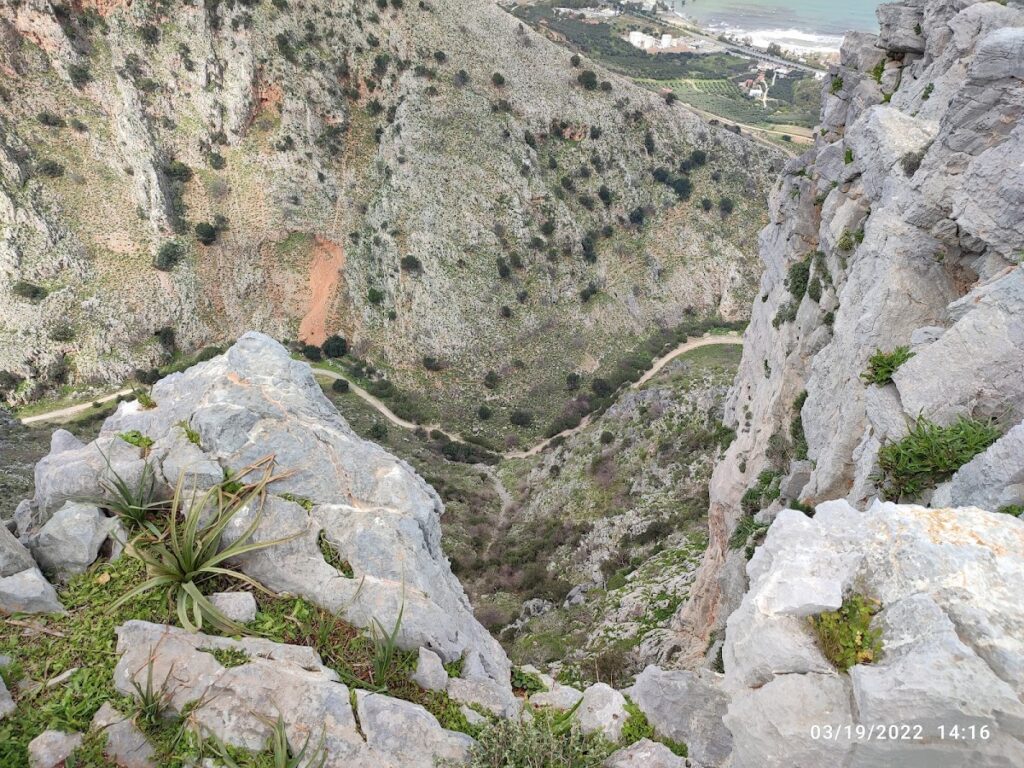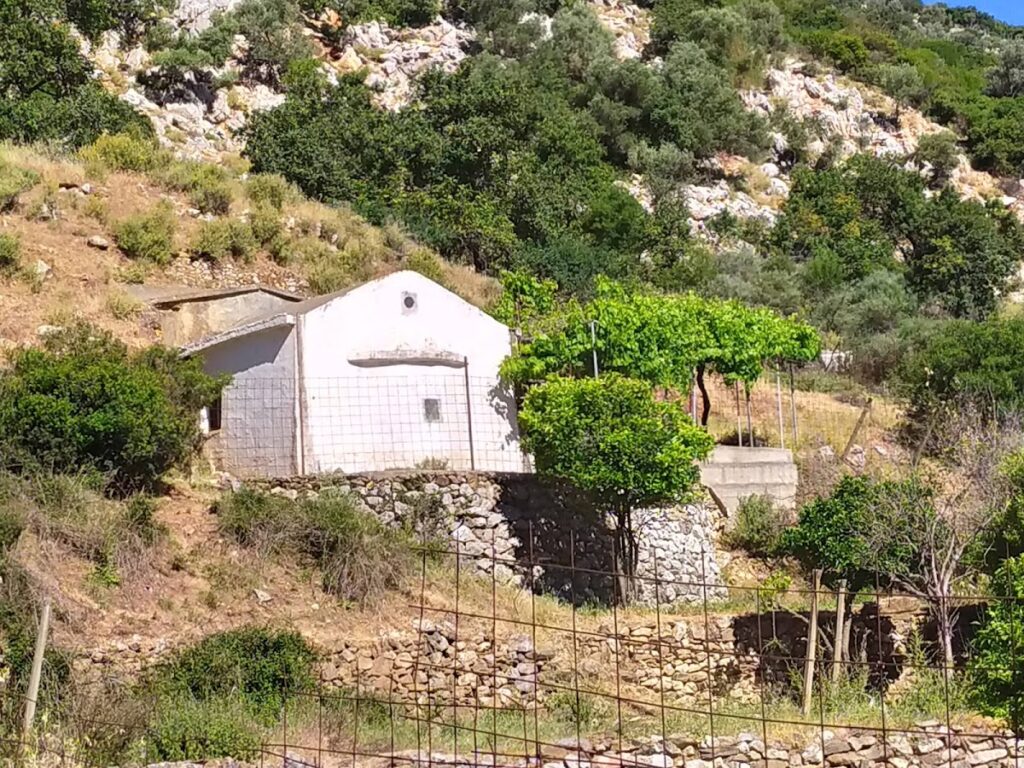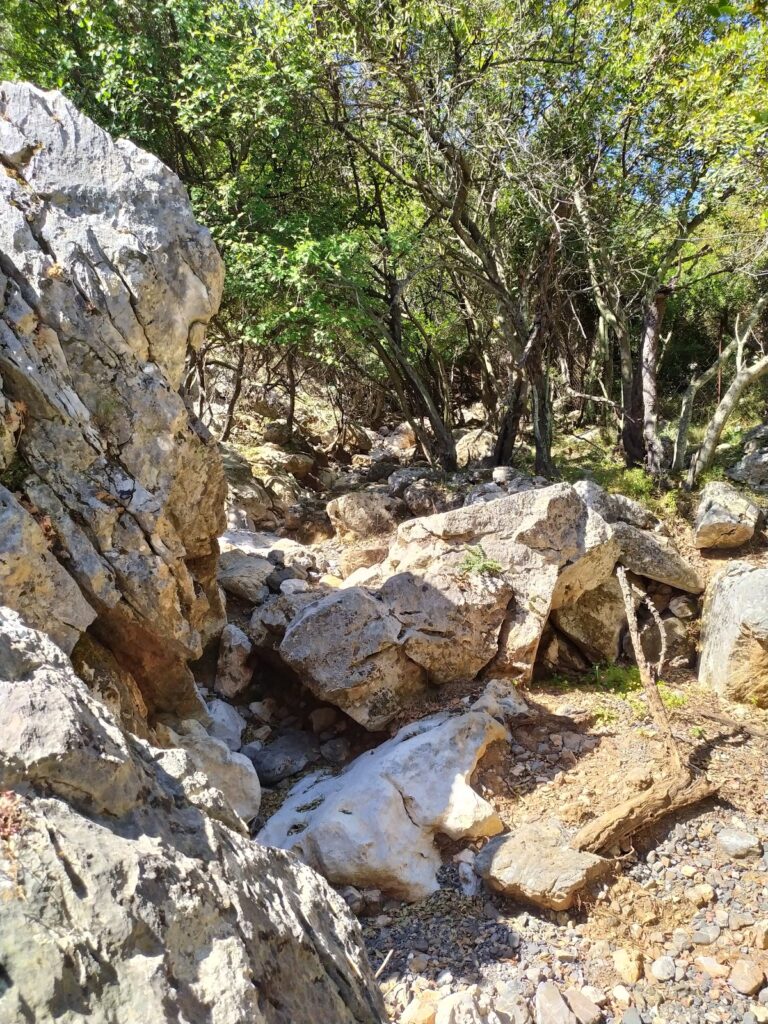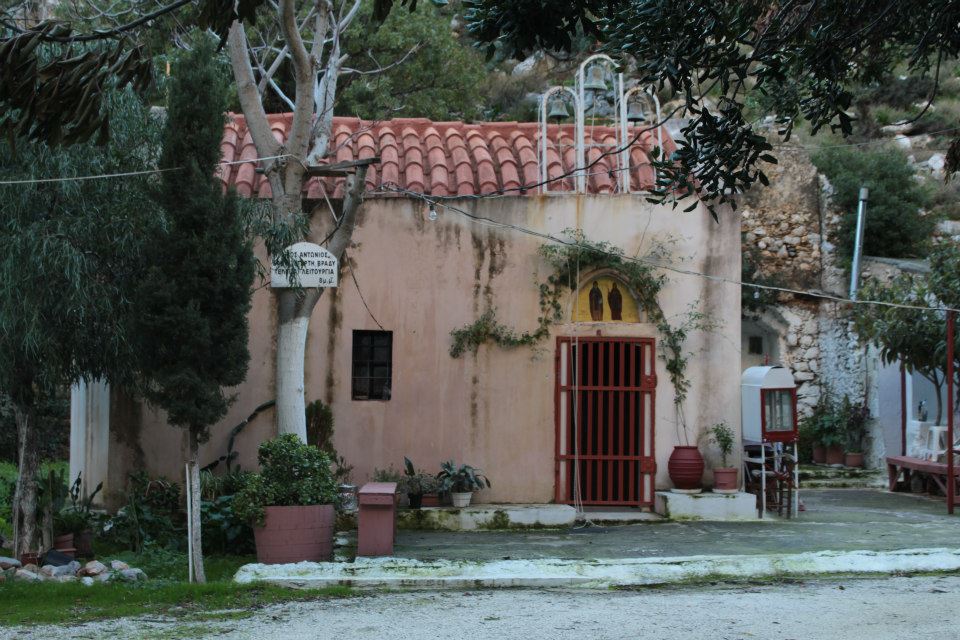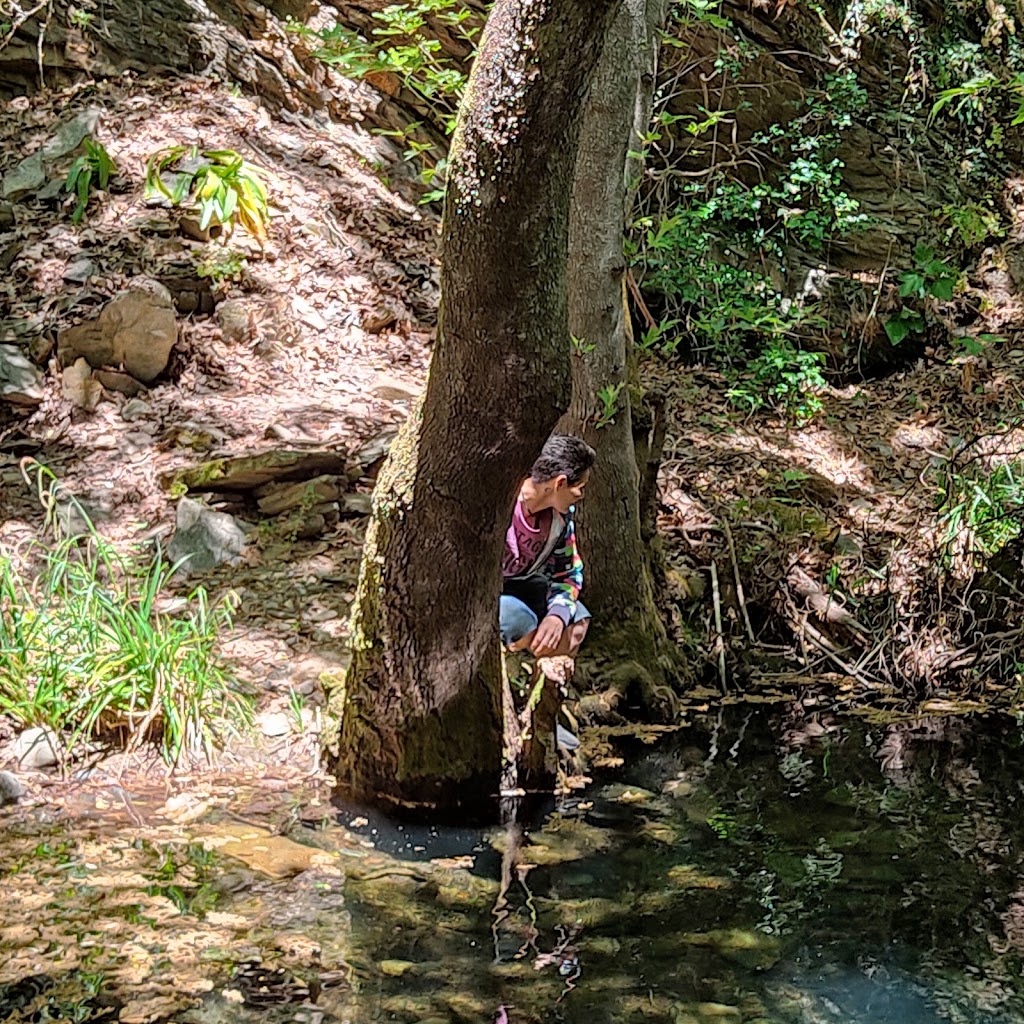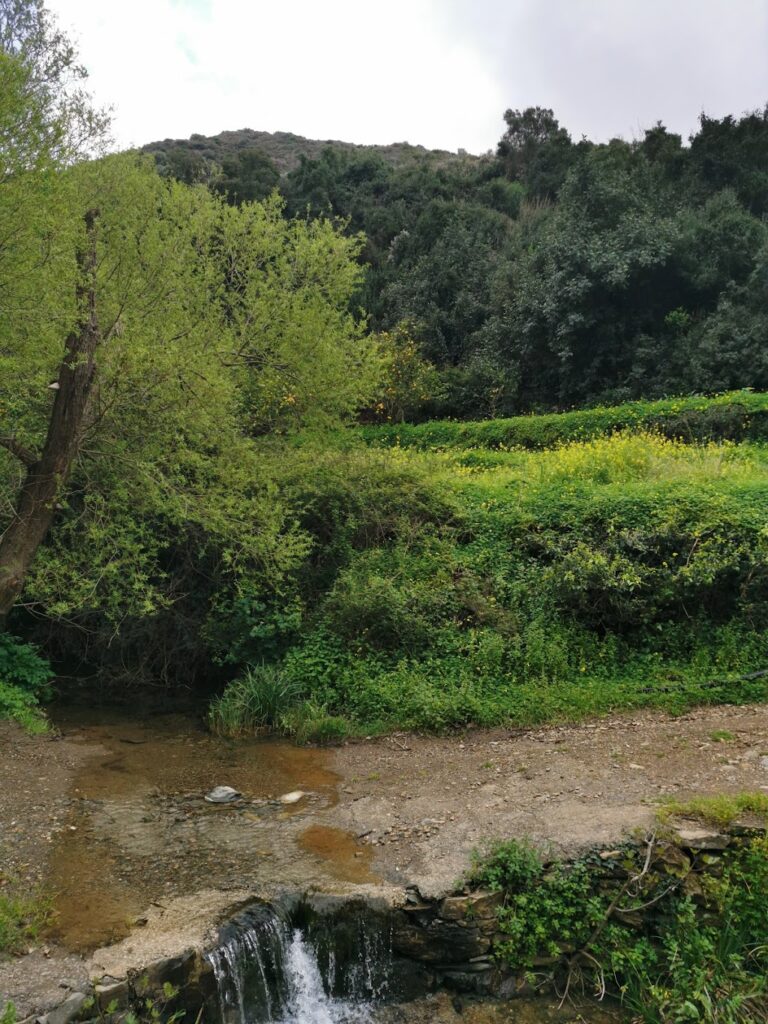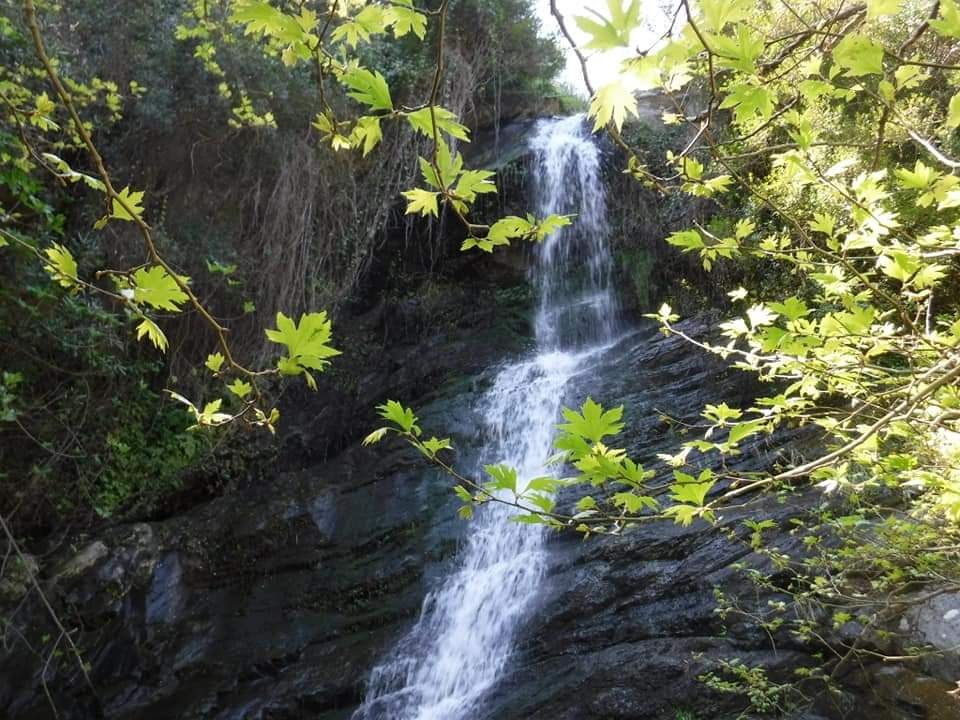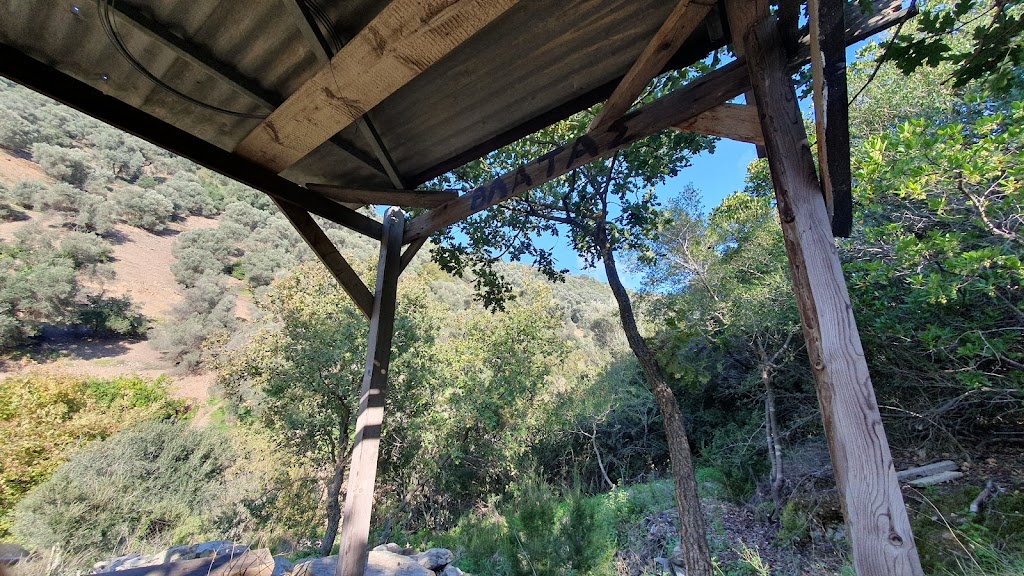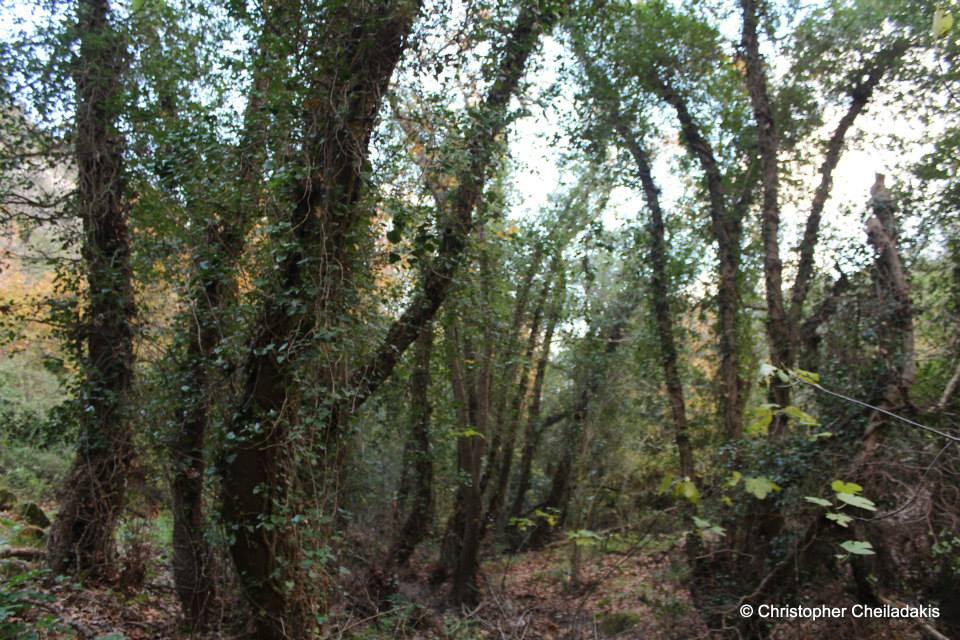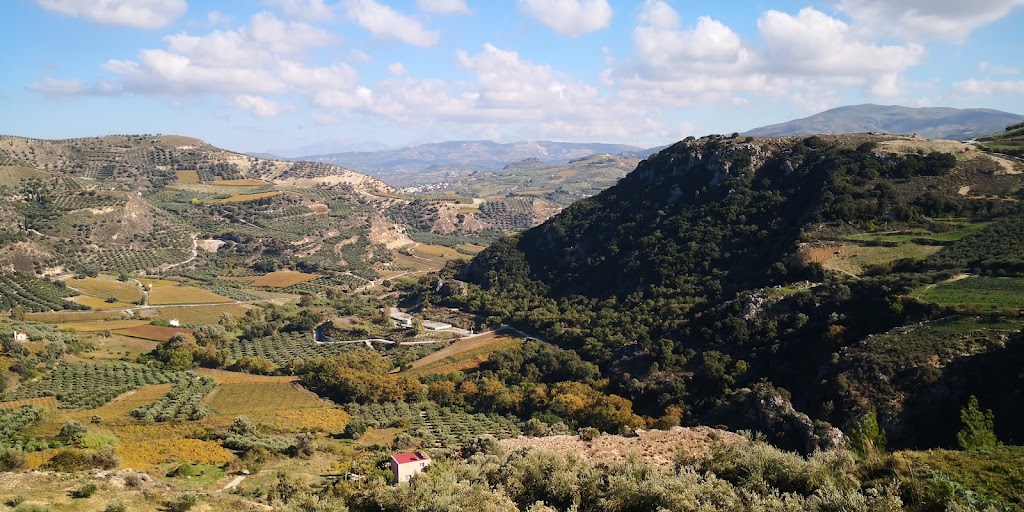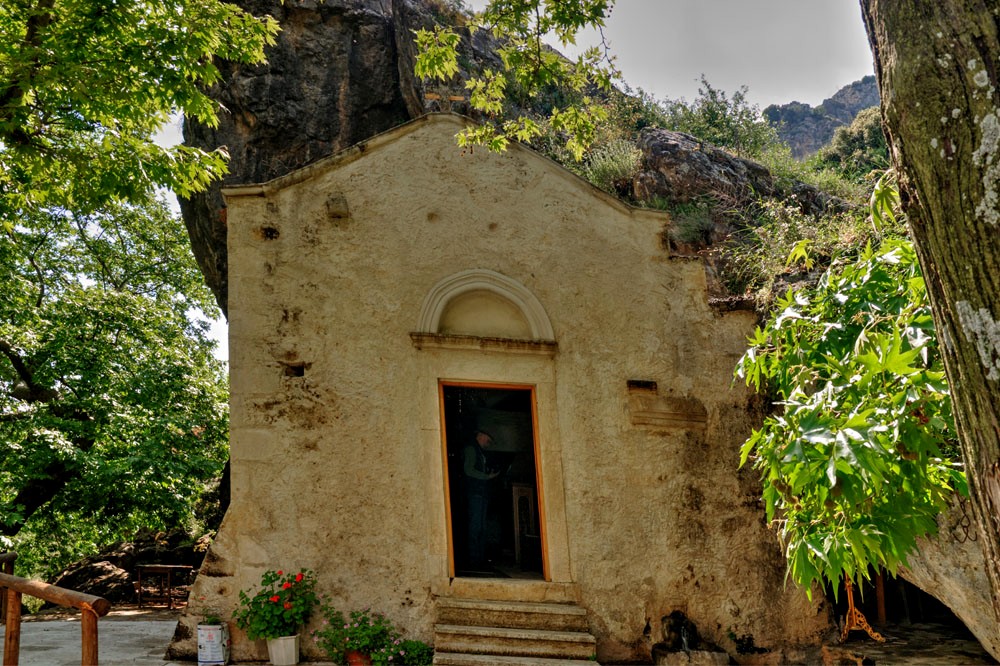Gorges to hike and walk near Gázi, in Heraklion region
List of Gorges near Gázi
- 2.8 km
- Almiros Gorge
- 3 km
- 1.5 h
- Hiking
Almyros Gorge, situated in Ellinoperamata, is the closest canyon to the west of Heraklion city. The gorge, a small oasis near the bustling city, is formed between Keri hills and the post-Minoan town of Kastrokefala. It serves as a crucial habitat, primarily due to the largest holly wood (Phillirea media) in Crete located on its eastern side. Other species like platan trees, carob, and wild olive trees also thrive here despite overgrazing.
The gorge has various names, such as Keri Gorge, named after the adjacent hill, or Almiros, due to its closeness to the Almiros river. It’s also called Ellinoperamata, the area where the gorge terminates. Frequently termed Porofarago, a common name for Cretan gorges, it’s also known as the Three Churches, in honor of the three chapels — Santa Marina, St. Antonios, and St. Paraskevi. Its commencement point near the Strouboulas peak gives it the Strouboulas name, while stories of Satanist assemblies and ghost sightings have resulted in its spooky moniker, the Ghosts’ Gorge.
Despite its proximity to Heraklion, few people have ventured here. Cars can reach the location where the 14th-century monastery of Agios Ioannis Farangitis (Saint John inside the Gorge), dedicated to Saint John the Baptist, was constructed near the canyon exit. The surviving chapel of Saint Marina was used as a cemetery, while the main temple was the present two-aisled chapel of Saint Anthony and Saint Paraskevi with significant frescoes. A little further, a shrine dedicated to Saint George can be found, and after nearly 1:30 hours of walking, the chapel of Lord Christ at the gorge’s starting point is reached.
The trail is lined with various trees, and the vegetation thickens as one ascends. Initially, the gorge is typically dry but transitions into a small stream during spring. While ascending, one can encounter three small waterfalls, which form at a site with a pinkish limestone hue after prolonged, heavy rainfall.
Almiros Gorge is a must-visit for adventure seekers and nature lovers. To reach this wild beauty, navigate towards the equally breathtaking Lake of Almiros. Located just a short distance from the path leading to the gorge, this lake is a wonder in itself. The lake’s crystal-clear water, flowing directly from the spring-fed mountain cliffs, offers an extraordinary view all the way to its bed.
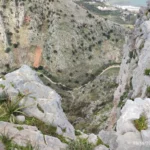
- 6.6 km
- Spiliotissa Gorge, Rogdia
- 1.5 km
- 0.5 h
- Hiking
A petite gorge forms to the west of the Rogdia village and opens up at the Paliokastro area. The journey begins from the ancient Koukos watermill, situated on the primary road linking Rogdia to Achlada, and takes you down to its most striking feature, the 10-meter tall Rechtra waterfall, which can be accessed through a relatively steep descent with ropes. As you traverse down the gorge, you’ll encounter several small waterfalls, the cave-like chapel of Panagia Spiliotissa, and finally arrive at the Paliokastro beach.
One of the most astounding sights is a cave situated right in the heart of the gorge, which has been converted into a studio for creating Christian icons by a hagiographer, seemingly in the middle of nowhere. It is highly recommended to stop by this unique site, engage in conversation with the artist, admire the icons, and perhaps purchase a few.
You can also conveniently reach the fall by trekking up the gorge from Paliokastro.
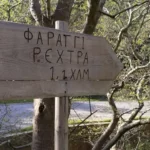
- 9.8 km
- Santorinios Gorge
- 3 km
- 1 h
- Hiking
Just a stone’s throw away from Heraklion city, near the Agios Panteleimonas Monastery in Fodele, you’ll find the Santorinios canyon. This canyon carries water from the Marathos village and the western slopes of Platani to the Fodelianos river. Although the canyon is relatively short, it remains unexplored due to the challenging access caused by thick vegetation and numerous ponds. Trekking through the riverbed, despite getting wet, simplifies the journey but calls for a change of footwear. The canyon’s name originates from the soil’s resemblance to that of Santorini Island, which was previously used in Crete’s construction.
Upon entering the gorge, you’ll encounter the ruins of a two-room watermill, its walls still standing tall, supported by an ivy branch woven into them. After some time, you’ll reach the first pond, Azilakokolymbos, which appears to be the path’s endpoint. However, if you manage to bypass the lake by either swimming or rock climbing, there’s more to discover. After overcoming this hurdle, the journey continues smoothly until you reach a majestic waterfall that forms a stunning pond at its base.
The adventure intensifies from this point. To proceed, you’ll need to scale the right side of the waterfall, approximately 15 meters, to reach the hilltop. To access the waterfall’s edge from here, a rope is necessary due to the steep and slippery terrain. As you continue up the canyon, you’ll be greeted by two awe-inspiring twin waterfalls.

- 14.1 km
- Astrakiano Gorge
- 11 km
- 5 h
- Hiking
The Astrakiano and Kounaviano canyons are two verdant gorges that converge near Skalani village and empty out onto Karteros beach. The combined length of these canyons is roughly 21 km. Situated to the east of Heraklion city, these gorges are part of the broader Mount Jiouktas area. They offer easy walking trails, making them perfect for families and children.
The longer of the two, Astrakiano, begins at the Paliarda location in Kolomodi and extends to the area beneath the deserted Kato Astraki village, after crossing the picturesque Astrakiani Kamara bridge. From Kato Astraki, a brief trail leads to the Neraidospilios site, known for its stunning pond and gushing water caves.
The path along the Karteros river commences from this point, offering a lush green trail equipped with wooden bridges and railings. After crossing the Aitania bridge at Kaki Rachi, we reach Kali Rachi where the Astrakiano and Kounaviano Gorges, originating from Peza, merge. From Kali Rachi, the river continues to Karteros along a well-structured path. This section, known as Karteros Gorge, passes by ancient water mills and the historic Saint Nicholas Church (Agios Nikolaos). Near the Karteros gorge exit, at the Mesa Karteros spot, you’ll find an old inn and a second chapel dedicated to Saint Nicholas. This location, accessible by car from Karteros, is an ideal picnic spot.
The Astrakiano canyon (Astraki – Kali Rachi) measures about 7km, with a hiking duration of 3-4 hours. The Kounaviano Gorge (Peza- Kali Rachi) is roughly 4km long, requiring about 2 hours for trekking. The shared section of the Karteros gorge (up to the second Saint Nicholas chapel (Kali Rachi – Mesa Karteros)) is approximately 6km.
The canyons’ route is abundant in natural, morphological, aesthetic, historical, and cultural aspects. The landscape boasts exceptional natural beauty, featuring springs, ponds, rivers, mini waterfalls, and lush vegetation. Prior to World War II, the canyon housed 10 watermills, and locals would fish for eels and crabs, some of which still exist today.
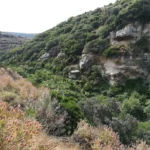
- 14.3 km
- Kounaviano Gorge
- 4 km
- 2 h
- Hiking
The Kounaviano gorge, known for its lush vegetation, is the greenest canyon in the entire Heraklion prefecture, serving as a verdant oasis in the heart of Pediada province. The gorge is named after the village of Kounavi in its district, even though it actually begins from the village of Peza, hence it could be referred to as Pezzano Gorge. This gorge is a tributary of the Karteros river and runs parallel to the Astrakiano gorge. The Astrakiano and Kounaviano gorges converge at the Kaki Rachi area near Skalani, forming the Karteros Gorge. Kounaviano’s entrance is situated at the northernmost point of the fertile Peza plain, collecting all the area’s water. It has numerous springs along its bed, some of which retain water throughout the year.
In recent years, the gorge’s trail has been marked and cleared, with the addition of small bridges, wooden railings, and informational signs. Walking along this trail is a delightful and easy experience, shaded by perennial plane, oak, and other trees. The riverbed walk is simple, without significant altitude changes or difficulties. At the gorge’s starting point, two small waterfalls can be seen. Old watermills, once used to grind the area’s cereals, can be found at three different points along the trail. This region has always been one of Crete’s most productive. Additionally, limestone kilns and various fruit tree gardens can be spotted. A walk from the gorge’s entrance at Peza to its exit at Kaki Rachi near Skalani takes approximately 2 hours.
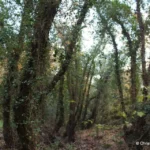
- 14.7 km
- Venerato Gorge
- 5 km
- 0.5 h
- Hiking
The Venerato canyon, a hidden gem, is nestled 17km south of Heraklion, adjacent to the Venerato village and Paliani Monastery. Despite its modest length of 500m, the deepest part of the gorge leaves a lasting impression on its visitors, despite the visible impact of human activities.
The journey begins in Avgeniki village and concludes at the Agios Fanourios church in Venerato, nestled beneath a towering cliff. A brief stroll through the canyon from Agios Fanourios can be paired with a quick exploration of Venerato village. This charming village, once home to Venetian nobles, was often referred to as “Little Venice” due to its picturesque landscape.
The Apollonas river, which maintains its flow throughout the year, meanders through the gorge, carrying water from Agia Varvara to the Giofyros river. The river’s name, Apollonas, is derived from the ancient town of Apollonia, which once stood here. Some remnants of this town still exist near the gorge. As one ventures further into the gorge, the vegetation and platan trees flourish, harmoniously blending with an ancient watermill. The gorge narrows down to a width of 60cm, with the walls towering up to 25 meters.
Moving ahead, the Gra Spiliara (Old Cave), a haven for wild pigeons, emerges. The cave and the canyon served as a sanctuary during the Turkish Era and the German Occupation of Crete. Some parts of the gorge require wading through water or climbing over rocks. It is advisable for those descending the gorge to wear a helmet to protect against potential falling stones caused by the goats that inhabit the canyon’s edges.
After walking another 80m, you’ll reach the Kouroupi area. Here, the canyon walls almost converge, creating several small waterfalls. There’s a narrow, 20-meter long crevice in the rock that ends in a 7-meter high cliff and a deep pond. This marks the end of the walkable part of the gorge.
Until the 1950s, locals sourced their drinking water from this river, used it for irrigation, and it was home to a variety of wildlife including turtles, eels, and crabs. Sadly, pollution and domestic sewage have significantly degraded the ecosystem. This beautiful location deserves a better fate, and we can only hope it attains it.
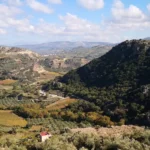
- 14.7 km
- Agios Antonios Gorge, Asites
- 3 km
- 1 h
- E4 trail
To the west of Ano Asites village, the river that initially forms the Saint Haralabos gorge, and later flows through the village, ultimately transforms into a breathtakingly deep and dramatic gorge, known as the St. Anthony gorge. The descent trail leading to the canyon bed can be found near the scenic Byzantine church of St. Anthony, which also hosts a drinking water spring.
The canyon is teeming with lush vegetation, including towering plane trees and various other plant species. The trail within the canyon forms part of the European E4 hiking route. This trail concludes at the exit of the gorge in the village of Kerasia, close to the Faneromeni church. Regrettably, the riverbed is littered with trash from Asites.
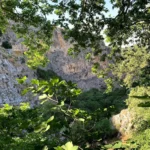
No results available
ResetGorges in other nearby areas
No results available
Reset